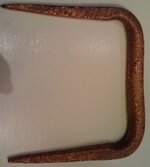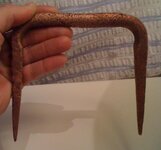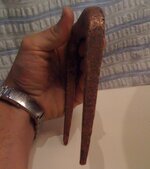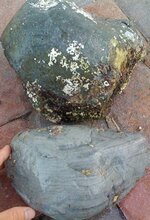theGOLD
Full Member
- Dec 6, 2006
- 110
- 5
- Detector(s) used
- JW Fisher 8x
Hey guys need some help with this one. I found this a little ways away from an old ballast pile. I cant tell what it is or whether its modern or from the wreck. The pictures here are post clean up. I dont have any from before, but there was healthy crusting on it. It's copper. Have FUN, and Merry Christmas!
-GOLD
-GOLD







